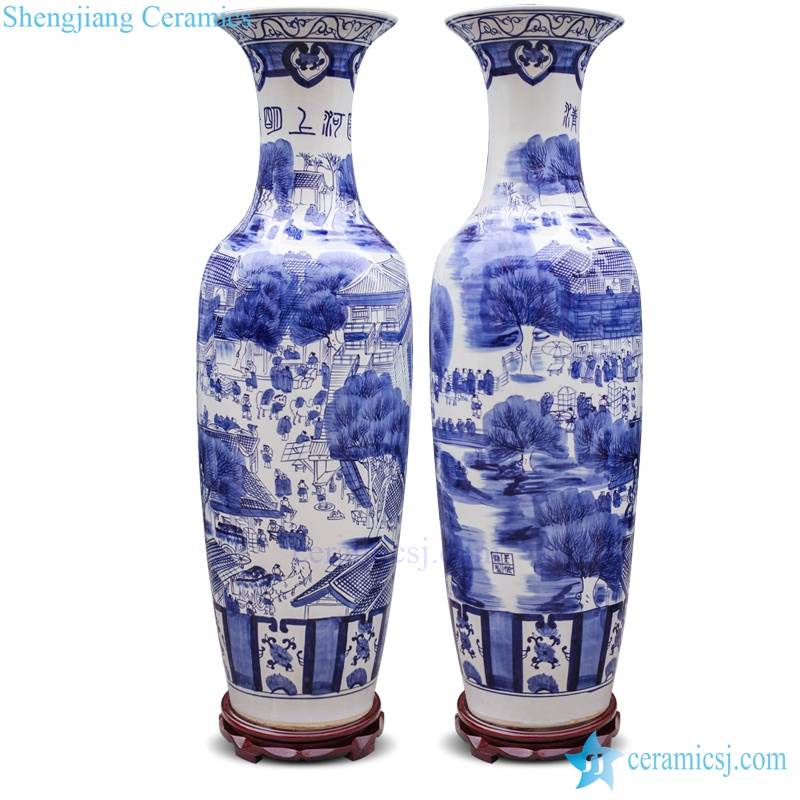
What key factors have driven the growth in prices for fine Chinese ceramics over the past decade?
SJ : The market for Chinese ceramics and works of art has really been rising over the last century, but what we’ve seen since the dramatic rise of the Chinese economy, particularly since the late 1990’s, is a staggering rise in prices in this field.
You have all this new wealth in China and very high net worth individuals who are extremely hungry to reclaim their past.
Why are ceramics so important in Chinese history?
SJ :Ceramics has always had an important place in China and although you’ve got traditions elsewhere — in the Middle East, in Europe — the history in China goes back thousands of years. The Chinese refined the technology over time and their advances are unmatched anywhere else in the world. Lunar New Year: Meet the men who have learned to think like lions The appreciation and a tradition of collecting Chinese ceramics also goes back a long way; beginning from the Tang dynasty (8th century) and the Song dynasty (9th to 13th centuries), many scholars and poets wrote about and compared the virtues of various wares. This is connected to the tradition of tea-drinking.
What advice would you give someone who is thinking about becoming a collector of fine Chinese ceramics?
SJ : Firstly start on the right track. Develop your interest through museum visits, and then come to auction previews. Not necessarily to buy the first time but they are an open space, a transparent platform. You can look, touch, you can get a feel for what these objects should look and feel like without having to buy anything. And I would say give yourself at least one or two seasons to get familiar and really find what it is you are particularly interested in, because Chinese ceramics is a vast subject. Then do price research to get a sense of where the market sits.
You mentioned that rising prices have resulted in an increasing number of sophisticated fakes in the collecting market. Have you met many people who have a collection they believe is real but has turned out to be fake?
SJ: This is the story of my life basically (laughs). My real fear for anyone starting to collect is getting on the wrong track because once you’re there it’s hard to extract yourself and I meet people who have spent a lifetime buying fakes.
It can sound quite scary for anyone wanting to buy Chinese porcelain but the truth is, there wouldn’t be so much money in our field if there was not such great consensus between auction house specialists, art dealers and museum curators as to what is genuine and what is fake. That’s why I recommend starting in a transparent environment.
The fake industry is sophisticated, but rarely do these two paths cross
How have the ‘fakers’ gotten so sophisticated?
SJ : Before the imperial kiln site in Jingdezhen had been excavated in the mid-1990s, fakers couldn’t work with the real thing and so they couldn’t feel or tell how it felt. But since the kilns have been properly excavated, there are so many shards there, the fakers can get a hold of this material and get a sense of how an eighteenth century or fifteenth-century body should feel. Fifty shades of jade: Why Chinese buyers spend millions on this stone, So since then there’s been a huge leap in faking the clay and the body of these porcelains.
How can someone starting out as a collector avoid getting duped by fake ceramics?
SJ : With fakes, when it seems too good to be true, it is too good to be true, especially for someone who is collecting part-time.
How can you assess whether a piece of porcelain is real or fake?
SJ : It’s complex, but it’s like when you see your mother. What makes her is the voice, the demeanor, the physical appearance, the smell, it’s all these elements together, so it’s the same with an object.
What makes a fine piece of Chinese porcelain is the weight, the tactile feel of the glaze and the body on the base, how the mark is inscribed on the base. It’s how the design is painted, the enamel used for that design, how does it shine, and how do the colors appear.
One other thing, when you make a decision, you must have had a good night’s sleep because when you are tired you look at things very differently.
About 17 years ago when I was just starting out I went on a valuation and went to a very clever dealer who served us the bit of wine and it was late at night, there was just a little lamp there. He showed us (some pieces) and I thought I’d discovered a treasure trove.
He brought them into the office the next morning and it was an absolute disaster! You need to be wide awake and alert.
